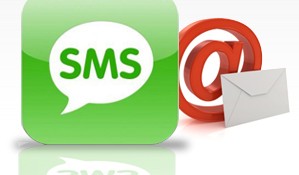 Today’s discussion on the Digital Dialtone will focus on the old and new, and how both can be successfully weaved into your Digital Marketing strategy.
Today’s discussion on the Digital Dialtone will focus on the old and new, and how both can be successfully weaved into your Digital Marketing strategy.
Email is the original electronic means of communication. It’s been around for nearly 50 years, believe it or not! It’s been mainstream for nearly 20 years, longer than Facebook, Twitter and certainly WhatsApp and Snapchat!
You have probably read many pundits who claim that “email is dead”. Do not believe them! Email is still the most effective form of electronic communication – it consistently and organically reaches a higher percentage of people than Facebook, Twitter and LinkedIn combined.
That doesn’t mean that email is perfect. There are issues with spam and an excess of email that makes it hard to manage. You will need to craft your email marketing strategy such that you are not viewed as an “over-emailer”. As a small business owner you should always be using email to communicate with your customers. Though social media is all the rage these days, social media actually has the opposite impact that you think it might: You are reaching fewer people organically on social media and you usually are limited in what you can say. In fact, Facebook is starting to filter promotional posts if they think it is not appropriate for a consumers feed!
That was the “old”. Now for the “new”: Messaging.
There is another up and coming tool you should also be thinking about – messaging. Messaging sits in between email and social media. It can be anything from text messaging to Facebook messaging to SnapChat. It’s not nearly as spammy as email – typically, messaging is done with friends and close contacts and is more permission based. But messaging is open and organic which makes it much more powerful in its reach compared to social media. You may have read articles espousing how the younger generation has embraced messaging and is starting to eschew social media, but messaging impacts people of all ages. Messaging has become more intimate and is typically used by people with people and brands that they trust the most.
With this in mind, we recommend two strong focuses:
- Leverage email – even over social media. If you are not getting the email addresses of your customers, you are losing a golden opportunity to reach them online in the most effective way. Implement a strategy to communicate with your customers regularly – not so much that they feel you are spamming them, but often enough that they know you are there. Each business will have a different timeframe of touchpoints that works for them – a plumber (for example) may send a monthly email whereas a local coffee shop could easily send weekly emails.
- Offer messaging to your customers. You will know who truly loves you business and is loyal to you when they choose to communicate via messaging. It will be the most effective online communication channel you have, so even if only 10% of your customers want it, why wouldn’t you offer it to them? That is engagement at the highest level.
Your strategy should keep in mind this order of effectiveness:
- Messaging – by far the most effective online communication strategy, but will likely be used by the lowest percentage of your customers. As you build your brand and loyalty, this number likely goes up, and possibly dramatically
- Email – the easiest way to reach the highest percentage of your customers. Email is three times (3x) more effective than social media.
- Social Media – the channel that gets all the hype and attention, but has the lowest organic reach (by far!) of these three options. It’s where small business owners have been spending the most amount of time in the past 2 years, and it is easily the least effective. You’ll also have to start spending money to reach your customers, making it the most expensive option too.
This article was syndicated from Business 2 Community: Digital Dialtone – Email and Messaging
More Digital & Social articles from Business 2 Community:




